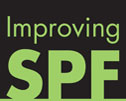In 2010, the Occupational Safety and Health Administration (OSHA) announced a new program—the Severe Violator Enforcement Program (SVEP)—to focus resources on employers who, according to OSHA, have exhibited indifference to worker safety manifested by willful, repeat or failure-to-abate violations of the Occupational Safety and Health Act. The SVEP also must be adopted by states that enforce their own occupational safety and health rules unless a state can demonstrate its program is at least as effective as the federal SVEP.
I hope you will not experience the SVEP's enforcement policies and procedures, but you need to be aware of the new program's scope.
Triggering the SVEP
A violation that qualifies under the SVEP, as determined by the OSHA area director, triggers significant enhanced compliance and enforcement procedures. Willful, repeat or failure-to-abate violations may qualify under the SVEP in the following circumstances:
- Death of a worker or hospitalization of three or more workers
- Industry operations or processes that expose workers to the most severe occupational hazards
- Construction hazards involving specific scaffold, fall-protection or ladder standards—so-called "high-emphasis hazards" in which the severity of injury and probability of an injury occurring are high
- When workers are exposed to highly hazardous chemicals
- All egregious enforcement actions
A violation OSHA deems to qualify under the SVEP will result in an enhanced follow-up job-site inspection by OSHA compliance safety and health officers. OSHA states the subsequent inspection's purpose is to confirm abatement of the previous violations and ensure other similar violations are not occurring. OSHA also may inspect related job sites of the same employer if there are reasonable grounds to believe hazards and violations exist at those locations.
If a follow-up inspection is impossible because the original job site has been closed down, the SVEP authorizes inspections of the employer's other job sites. In such cases, OSHA can require:
- Provisions in settlement agreements for violations that require employers to notify OSHA of all job locations before startup for a one-year period
- Administrative subpoenas directing an employer to notify OSHA of current job sites and expected job locations in the upcoming one-year period
OSHA may wield publicity as an additional enforcement tool under SVEP procedures. OSHA is authorized to issue national and regional news releases relating to the details of enforcement actions taken in SVEP cases. Unions representing employees of a company that is the subject of an SVEP case also may receive informational copies of the citations issued to the company. SVEP procedures also authorize OSHA to conduct follow-up meetings with company officers, employees and unions to address safety and health issues.
Settlement agreements in SVEP cases likely will be used to require employers cited under the program to hire qualified consultants to assist with developing safety and health programs to address hazards related to company operations and the specific OSHA subpart cited. Settlement agreements also may require an employer to detail control measures to be implemented at future job sites to eliminate or reduce cited hazards.
An employer cited under SVEP also may be asked to provide OSHA with quarterly injury and illness logs as part of a settlement as well as advance consent for future inspections.
Serious implications
The SVEP procedures are powerful tools for OSHA with serious implications for employers subject to its provisions. It is critical for any employer faced with penalties and administrative actions under the SVEP to seek advice from an attorney who is well-versed in OSHA matters.
Harry Dietz is NRCA's director of risk management.



